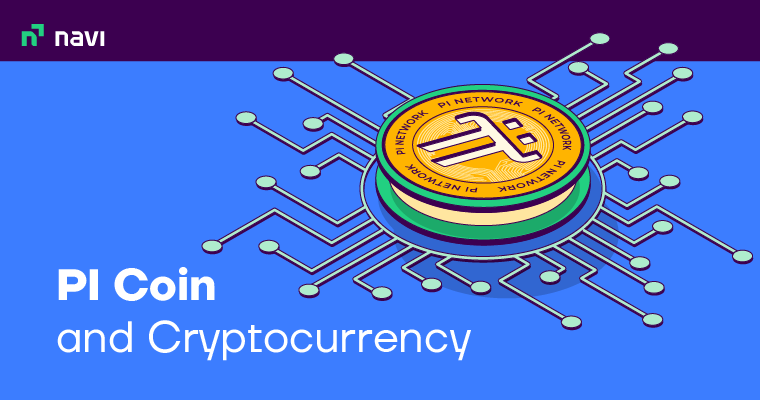What is Liquidity Pool – Benefits, Importance & How it Works?

Liquidity Pools (LP) form the backbone of decentralised crypto exchanges. They are used to facilitate decentralised trading, lending, and many more functions that are based on the blockchain algorithm. The users of liquidity pools offer LP tokens for the purpose of creating a market. In exchange, they earn trading fees from the transactions taking place in the pools.
There are multiple crypto exchanges whose operations are completely based on liquidity pools, for example, Uniswap, Balancer, Curve, etc. To understand what a liquidity pool is in detail, keep reading.
What is Liquidity Pool?
A crypto liquidity pool (CLP) refers to a collection of tokens that are locked in a smart contract. Liquidity pools form the core of the decentralised finance (DeFi) ecosystem. They help in facilitating decentralised lending and trading across various crypto exchanges.
The primary aim of a liquidity pool is to remove the issues related to illiquid markets that are governed by centralised systems. The users of liquidity pools are offered a portion of the trading fees based on the percentage of liquid funds they provide for the pools.
How do Liquidity Pools Work?
Here are the steps that showcase how crypto liquidity pools work:
- Step 1: Two tokens or cryptocurrencies form a liquidity pool, for example, Ethereum and Bitcoin.
- Step 2: The creator of this pool ascertains the initial price of each asset. That said, if this value doesn’t match the price of the global cryptocurrency market, LPs can lose money.
- Step 3: More liquidity providers add funds to the pool while ensuring that the value of the tokens is in line with their market price.
- Step 4: The pricing algorithm adjusts asset price while the CLP supports token swaps. The value can be ascertained by each liquidity pool utilising its individual methodology.
- Step 5: Irrespective of the size of the trade, the AMM algorithm makes sure that there’s sufficient liquidity.
- Step 6: The pricing of the pool is ascertained by the token ratio. For example, if someone buys BTC from a BTC/ETH pool, the volume of ETH increases, which affects the price of both crypto tokens.
- Step 7: Overall price adjustment will be based on the amount that has been spent and how much that has altered the pool. That said, large-sized pools exhibit lesser price variations.
- Step 8: Users of the pool are charged a transaction fee that is used to pay the liquidity providers. However, these charges are reinvested in the pool, which helps in increasing the value of the tokens and expanding the pool.
Benefits of Crypto Liquidity Pools
These are a few benefits that come with crypto liquidity pools:
- A crypto liquidity pool makes DEX trading hassle-free by enabling direct transactions at real-time market prices.
- CLPs enable individuals to offer liquidity and get rewards, interest or a percentage yield on their digital assets.
- CLPs allow traders to buy and sell digital assets without the fear of incurring losses due to liquidity issues.
- LPs utilise smart contracts that are publicly viewable. As a result, audit details remain transparent.
Also Read: What Is Liquidity Adjustment Facility And How Does It Impact The Indian Economy?
Why are Crypto Liquidity Pools Important?
Experienced traders who have bought and sold digital assets in the crypto space know the risk of entering a market that has low liquidity. In the case of a cryptocurrency that has a low market capitalisation, slippage is a concern that one should take into account at the time of exiting or entering a trade.
Slippage refers to the difference between the estimated price of a trade and the value at which the trade is executed. Slippages are common when there’s high volatility in the market.
That said, low liquidity can lead to increased slippage, and the final trading price can exceed the initial market order price by a significant margin. Additionally, if there’s not enough liquidity for a trade, then users won’t be able to exchange their tokens. This is where liquidity pools come to the rescue. They help to keep the financial systems of a DEX running by providing smart contracts. The contracts contain locked crypto tokens that have been supplied by the platform’s users. This ensures sustainable liquidity in the DeFi ecosystem, which enables the users to buy and sell tokens on exchanges readily.
What is the Role of Crypto Liquidity Pools in DeFi?
CLPs play an extremely vital role in decentralised exchanges (DEXs). They offer speed, convenience and liquidity to the decentralised finance ecosystem. Users can utilise the mechanism of a liquidity pool to accumulate their assets in the form of smart contracts in a DEX. This would offer asset liquidity to traders and enable them to swap between different currencies.
Unlike centralised exchanges, DEXs are powered by the AMM (Automated Market Makers) computer programme. The programme lets anyone create a market in a decentralised exchange by depositing cryptocurrency into a liquidity pool.
Before the introduction of AMMs, crypto liquidity was an issue for DEXs. DEXs had a complex interface, and the number of traders was also low. As a result, it was not that easy to find adequate people wanting to trade regularly.
However, after AMMs entered the market, they solved the issue of low liquidity by forming liquidity pools and giving providers incentives to supply such pools with assets without involving any intermediary. Trading on decentralised finance exchanges has now become straightforward and easy due to the high liquidity associated with liquidity pools.
Also Read: What Is Statutory Liquidity Ratio And Why Is It Important?
Final Word
Liquidity pools are one of the main technologies in the DeFi ecosystem at the moment. Their growth indicates a positive outlook for DeFi and cryptocurrency. CLPs can open the crypto space to more consumers and eliminate concerns related to volatility in the crypto market.
FAQs
Ans: Here are some of the best use-cases of liquidity pools:
• Liquidity mining/yield farming
• Efficient governance
• Tranching, which involves categorising financial assets based on their risks and returns.
• Minting synthetic assets
Ans: Risks associated with liquidity pools are as follows:
• Access risks: There’s a possibility that developers might have admin access within the smart contract code. They can use it to alter the regulations of the pool or engage in some malicious activity.
• Temporary loss risks: There’s a possibility of incurring temporary losses when one offers liquidity to any AMM.
Besides these two, one should be aware of the smart contract-based risks.
Ans: Here are some major limitations of liquidity pools:
Possibility of frauds (exit scams, rug pulls, etc.)
The possibility of hacking exploits owing to below-par security standards
Exposure to impermanent loss
Ans: Liquidity pools are prone to impermanent loss. If the ratio of the deposited tokens in a liquidity pool becomes uneven due to market price fluctuations, this could result in significant loss for the investor. This loss is referred to as impermanent loss.
Before you go…
- Looking for instant 🚀 personal loans 24*7 anywhere, anytime? Get personal loans up to ₹20 lakh starting at 9.9% p.a. Install the Navi app now!
- Or, maybe you’re looking to buy that house you’ve been eyeing 🏠 and you need a loan of up to ₹5 crore. Install the Navi app now and get instant in-principle approval right away! Interest rates starting at 8.60% p.a.
- How about an affordable health insurance policy 👨⚕️ starting at a monthly premium of just ₹235? Install the Navi app now and get your policy in under 2 minutes.
- Instead, want to put your savings into action and kick-start your investment journey 💸 But don’t have time to do research. Invest now with Navi Nifty 50 Index Fund, sit back, and earn from the top 50 companies.
Disclaimer: Crypto products and NFTs are unregulated and can be highly risky. There may be no regulatory recourse for any loss from such transactions.
Mutual Fund investments are subject to market risks, read all scheme-related documents carefully.
This article has been prepared on the basis of internal data, publicly available information and other sources believed to be reliable. The information contained in this article is for general purposes only and not a complete disclosure of every material fact. It should not be construed as investment advice to any party. The article does not warrant the completeness or accuracy of the information, and disclaims all liabilities, losses and damages arising out of the use of this information. Readers shall be fully liable/responsible for any decision taken on the basis of this article.

Customer’s Feedback
No comments found.Top 10 Cryptocurrencies to Invest In 2023 – Best Cryptocurrencies In India
Cryptocurrency is a digital currency which can be used to purchase goods and services without the u... Read More »8 Top Crypto Exchanges in India – Best Crypto Exchanges 2023
Crypto assets are attracting more and more traders to explore the possibilities of their rising mar... Read More »What is Crypto Airdrop – Its Types, Taxation, Benefits and How Does it Work?
Crypto Airdrop is among one of the key strategies that have grown extremely popular since 2017 in t... Read More »What is Pi Cryptocurrency: Network, Value, Price and Future
The Pi Coin cryptocurrency has made the mining of digital currencies accessible for crypto enthusia... Read More »What Is Tax On Crypto In India And How It Is Calculated
Cryptocurrencies are decentralised digital currencies or assets based on blockchain technology, whi... Read More »What Is Internet Computer Protocol (ICP) – Its Price, Investment Benefits And Uses
The ICP crypto is the native token of the ICP Blockchain network, which is used to reward the users... Read More »What Is A Crypto Mining Rig – Its Setup, Types and How To Build One
A Crypto mining rig is a customised personal computer. It features all the essential elements of a ... Read More »Polygon(MATIC): How Does It Work, Benefits and Price Prediction
Polygon (MATIC) is a scaling solution for Ethereum, and MATIC is the name of the token that powers ... Read More »What is GALA Crypto: Review, Benefits and How to Buy GALA Coins?
GALA is an Ethereum-based cryptocurrency that powers Gala Games, a play-to-earn gaming platform. Th... Read More »What is Bullish Engulfing Pattern – its Importance in Trading
Trading in stocks is challenging. That’s why traders use several technical analysis tools, like c... Read More »What is 1inch Crypto – How Does it Work and How to Buy it?
The 1inch protocol is a decentralised exchange (dex) aggregator. Dex is a peer-to-peer (buyers and ... Read More »What is Staking Crypto and How does It Work?
Staking crypto means pledging your cryptocurrencies to the blockchain network to confirm trans... Read More »Top 10 Chit Fund Schemes in India in 2023
Chit funds are one of the most popular return-generating saving schemes in India. It is a financial... Read More »10 Best Gold ETFs in India to Invest in April 2023
Gold ETFs or Gold Exchange Traded Funds are passively managed funds that track the price of physica... Read More »10 Best Demat Accounts in India for Beginners in 2023
Creation of Demat accounts revolutionised the way trades were conducted at the stock exchanges. It... Read More »20 Best Index Funds to Invest in India in April 2023
What is an Index Fund? An index fund is a type of mutual fund or exchange-traded fund (ETF) that... Read More »Best Arbitrage Mutual Funds to Invest in India in April 2023
Arbitrage funds are hybrid mutual fund schemes that aim to make low-risk profits by buying and sell... Read More »10 Best SIP Plans in India to Invest in April 2023
What is SIP? SIP or Systematic Investment Plan is a method of investing a fixed amount in ... Read More »10 Best Corporate Bond Funds in India to Invest in April 2023
Corporate bond funds are debt funds that invest at least 80% of the investment corpus in companies ... Read More »10 Best Bank for Savings Account in India [Highest Interest Rate 2023]
Savings account is a type of financial instrument offered by several banks. It lets you safely depo... Read More »






























